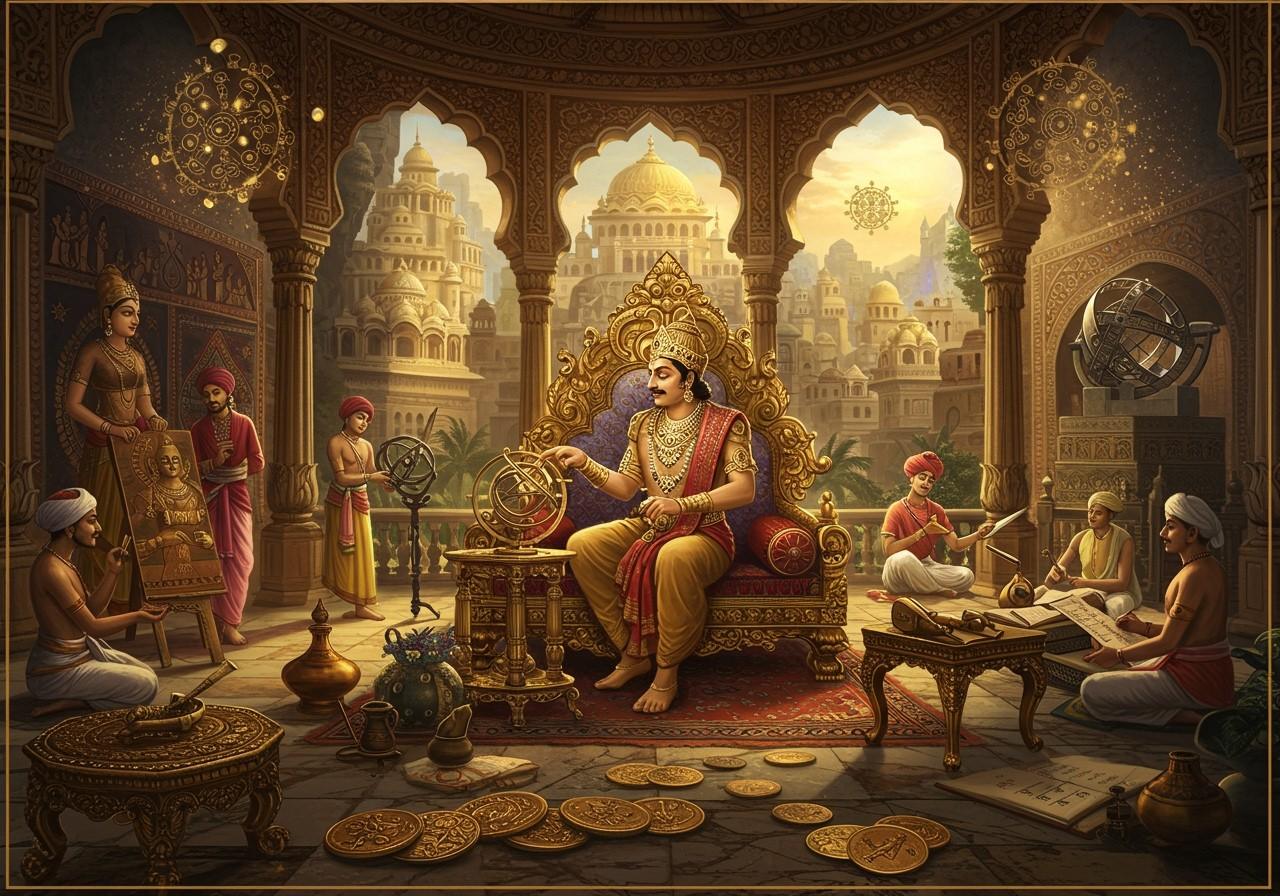
The Gupta Empire, spanning from the mid-3rd century to the mid-6th century CE, is often hailed as India’s Golden Age. This era, marked by significant cultural and intellectual achievements, saw advancements in various fields, from the arts and architecture to the sciences, religion, and philosophy. Founded by Sri Gupta, the empire flourished under rulers like Chandragupta I, covering much of northern, central, and parts of southern India. Though celebrated, the “Golden Age” label has been contested by some historians. The empire’s eventual decline came in the 6th century following invasions by the Hunas.
Pre-Gupta Dynasties
Before the Gupta Empire’s rise, several notable dynasties shaped India’s landscape:
- Maurya Dynasty (c. 322-185 BCE): Known for its vast empire and the reign of Emperor Ashoka, whose embrace of Buddhism left a lasting legacy of peace and social welfare. The Mauryan empire’s sophisticated administrative structure and focus on public works significantly impacted later Indian empires.
- Satavahana Dynasty (c. 1st century BCE – 3rd century CE): This dynasty played a crucial role in the Deccan region’s prosperity. Their rule fostered trade, economic growth, and a flourishing of art and architecture, particularly in the form of elaborate rock-cut caves and stupas.
- Kushan Dynasty (c. 1st – 3rd century CE): Facilitating trade and cultural exchange between India and Central Asia, the Kushan Empire played a vital role in the transmission of Buddhism to China and other parts of East Asia. Their reign also saw a unique blend of Hellenistic, Indian, and Iranian artistic styles.
- Shaka Dynasty (c. 1st century BCE – 4th century CE): The Shakas, originally from Central Asia, established their rule in western India. They made significant contributions to art, architecture, and coinage, leaving a distinct mark on the region’s cultural development. Their rule also saw the adoption of the Saka calendar, which is still used in India today.
The Gupta Empire’s Golden Age
The Gupta Dynasty ushered in a period of remarkable flourishing across various domains:
- Art and Architecture: The Ajanta and Ellora caves, adorned with intricate carvings and vibrant murals, stand as testaments to the artistic brilliance of the Gupta era. These sites showcase a sophisticated understanding of perspective, human anatomy, and religious symbolism.
- Science and Mathematics: Scholars like Aryabhata made groundbreaking contributions to astronomy and mathematics, including the concept of zero and the decimal system. These advancements laid the foundation for future scientific discoveries in India and beyond.
- Literature: The Gupta period witnessed a flourishing of Sanskrit literature, with renowned poets and playwrights like Kalidasa producing timeless works. His plays and poems continue to be studied and admired for their lyrical beauty and profound insights into human nature.
- Economic Prosperity: Robust trade networks, extending to Southeast Asia and the Mediterranean, fueled economic prosperity during the Gupta era. This prosperity supported the development of art, architecture, and scholarship, contributing to the empire’s overall flourishing.
- Administrative Efficiency: A well-structured and efficient administrative system contributed to the Gupta Empire’s stability and growth. This system, characterized by a hierarchical structure and a focus on revenue collection, provided a framework for later Indian empires.
Post-Gupta Dynasties
Following the Gupta Empire’s decline, various dynasties emerged:
- Vakataka Dynasty (c. 3rd – 5th century CE): Contemporary with the later Guptas, the Vakatakas ruled central India and maintained close ties with the Gupta empire through marriage alliances. They are known for their patronage of the arts and literature, particularly in the Deccan region.
- Harsha Empire (c. 606-647 CE): Brief but significant, Harsha’s rule saw a resurgence of centralized power and cultural achievements in northern India. He was a patron of the arts and a devout Buddhist, promoting religious harmony during his reign.
- Rashtrakuta Dynasty (c. 8th – 10th century CE): Known for their architectural marvels, including the Kailasanatha temple at Ellora, the Rashtrakutas established a powerful empire in the Deccan region. They were also patrons of scholarship and literature.
- Chola Dynasty (c. 9th – 13th century CE): The Cholas built a vast maritime empire, excelling in art, architecture, and naval power. Their impressive temples, bronze sculptures, and overseas trade networks left a lasting legacy on South India and Southeast Asia.
Poojn.in: Connecting to India’s Cultural Heritage
At Poojn.in, we offer a curated collection of authentic puja items and religious artifacts that resonate with India’s rich spiritual traditions, including those of the Gupta era. Explore our selection of:
- Bronze and brass statues of Hindu deities: Discover exquisitely crafted statues in the classical Gupta style, honoring the divine figures revered during this Golden Age.
- Traditional puja thalis: Enhance your worship rituals with intricately designed thalis inspired by Gupta-era metalwork, reflecting the artistic sensibilities of the time.
- Pure copper items: Experience the purity and craftsmanship of copper items reminiscent of the Gupta Dynasty’s metallurgical excellence, connecting you to ancient traditions.
- Handcrafted incense holders and dhoop stands: Elevate your spiritual practice with beautifully crafted incense holders based on ancient patterns, adding a touch of traditional elegance to your sacred space.
Visit Poojn.in today to explore our full collection and bring the timeless beauty of India’s spiritual heritage into your home.
Enduring Legacy of the Guptas
The Gupta Dynasty’s influence continues to resonate in modern India:
- Art and Architecture Inspiration: Gupta aesthetics continue to inspire contemporary Indian art and design, reflecting a deep appreciation for the empire’s artistic legacy.
- Scientific Discoveries: Gupta-era mathematical and astronomical advancements, such as the concept of zero and the decimal system, form the basis of modern scientific education in India.
- Literary Heritage: The works of Kalidasa and other Gupta-era writers remain an integral part of India’s literary heritage, inspiring contemporary authors and poets.
Conclusion
The Gupta Dynasty’s Golden Age represents a pivotal period in Indian history. Their contributions to art, science, literature, and governance have left an enduring legacy, shaping India’s cultural and intellectual identity and continuing to inspire generations.


